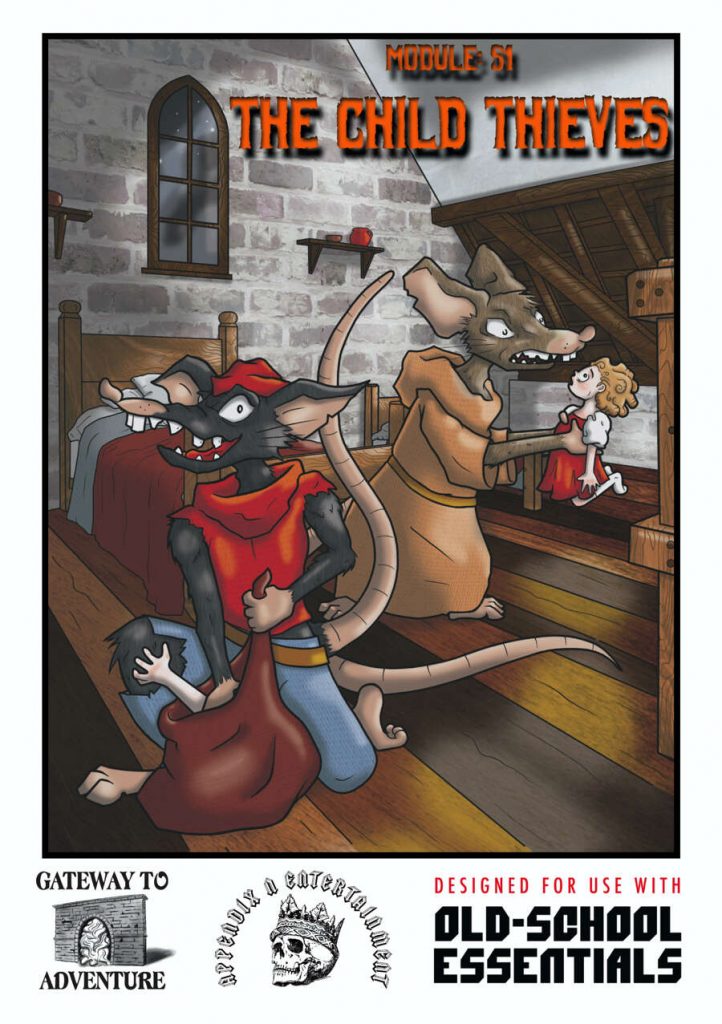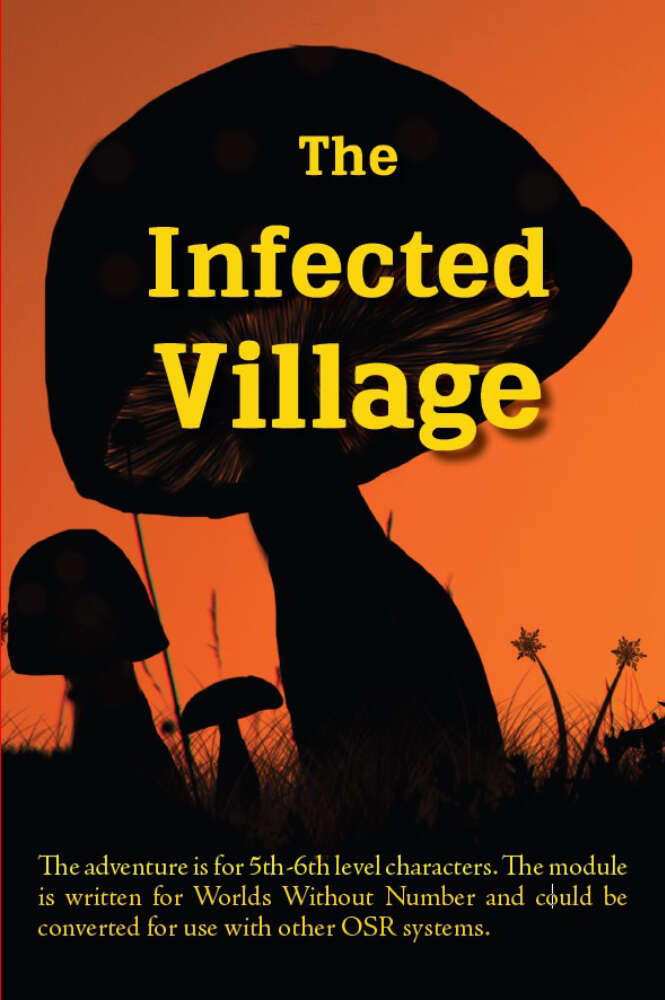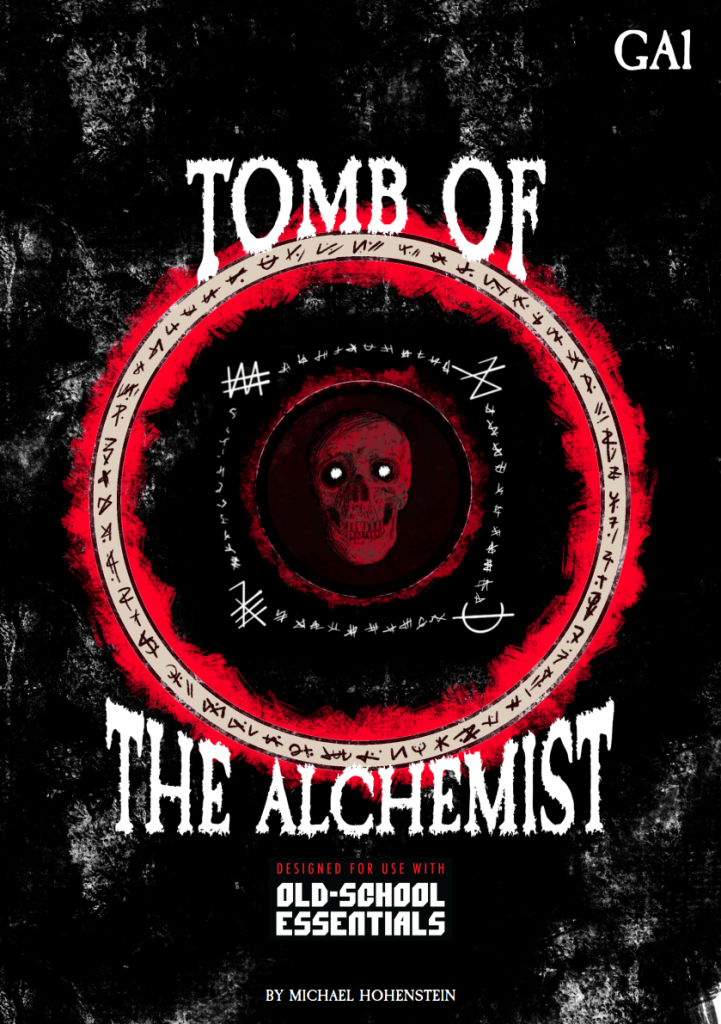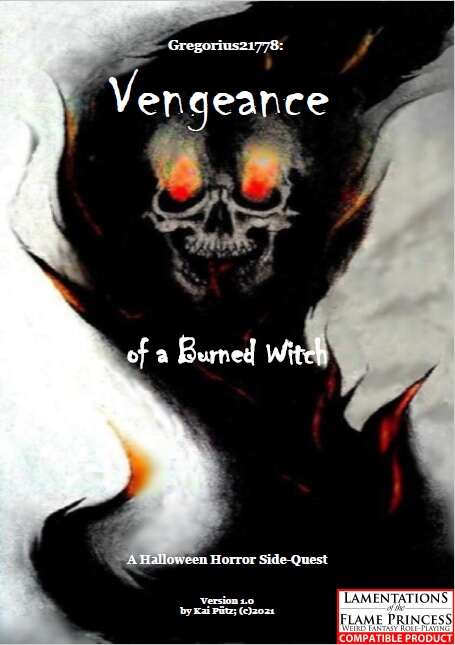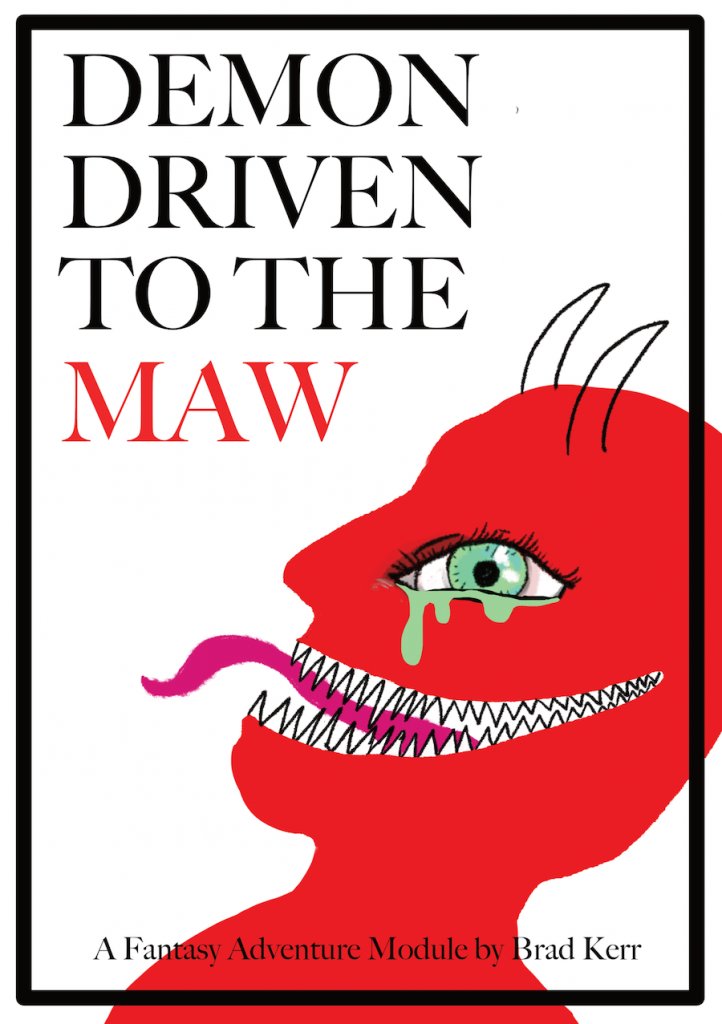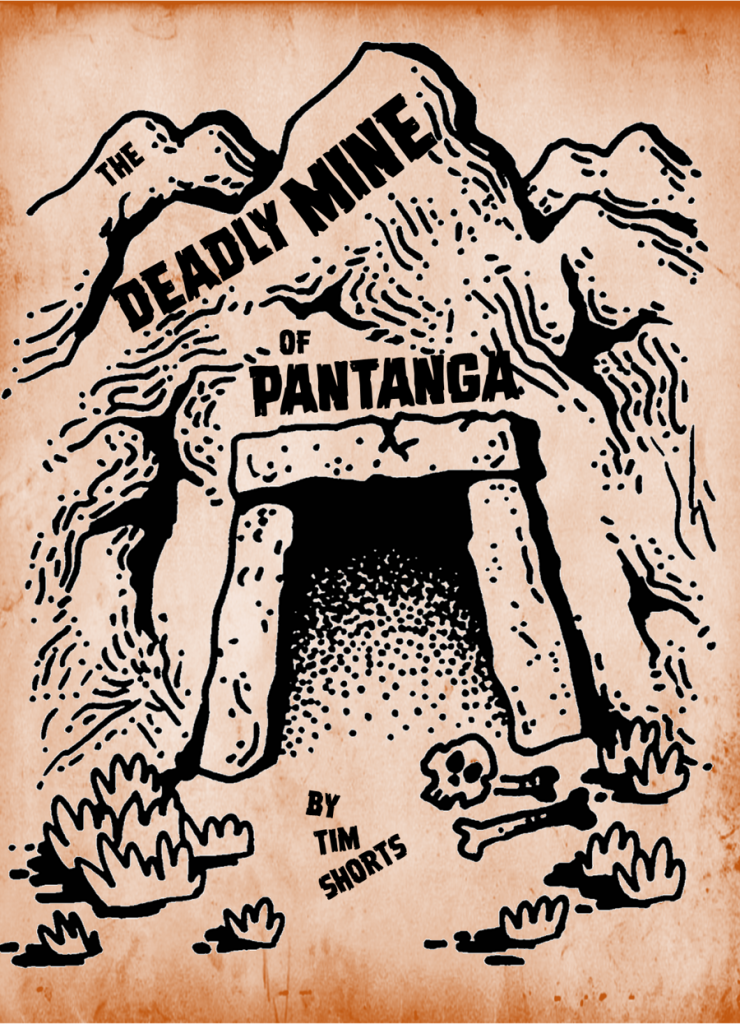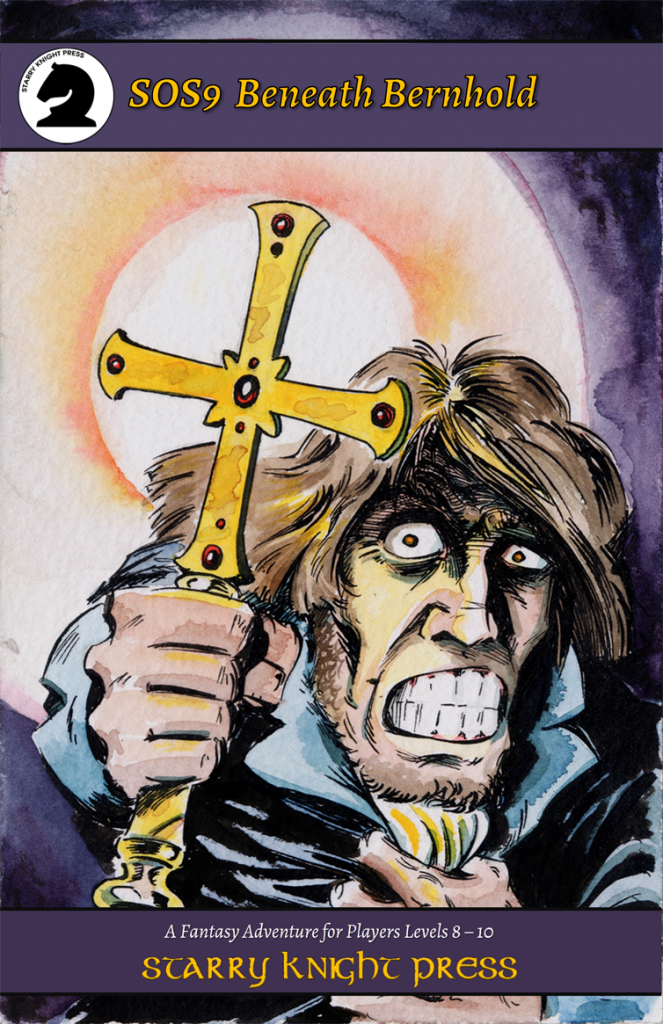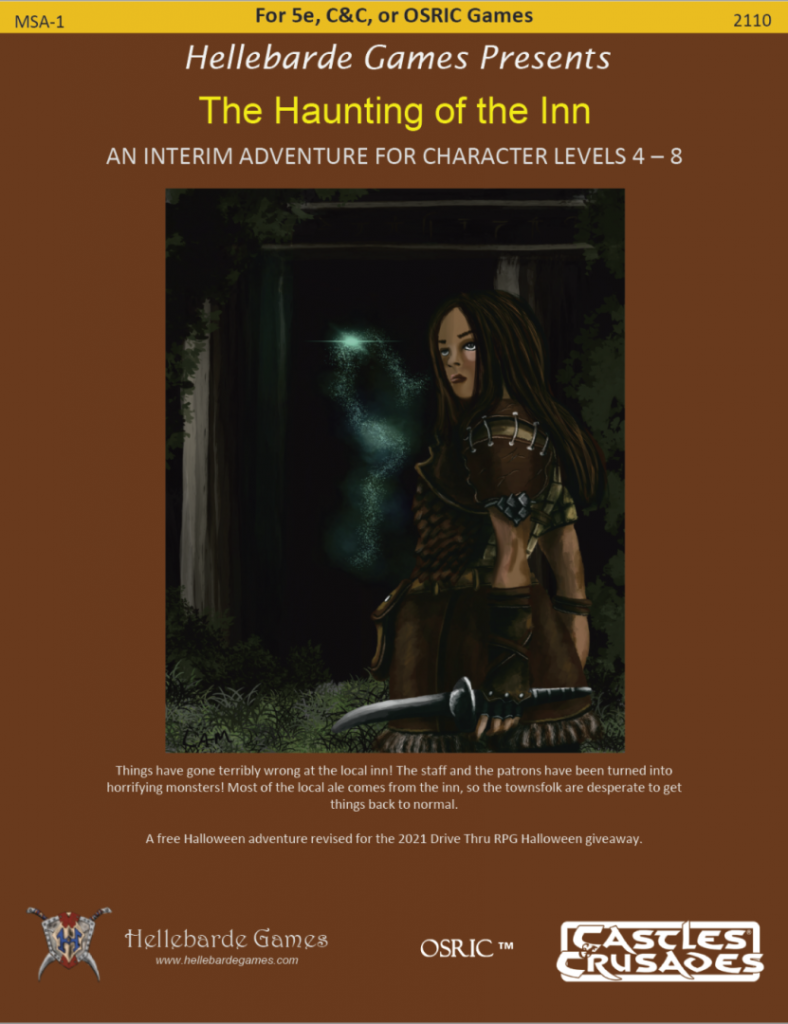
By Don MacVittie
Hellebarde Games
C&C, OSRIC, 5e
Levels 4-8
When all you want is a drink at the inn, perhaps a warm bed for the night, of course it has been taken over by unspeakable horrors! If you’re going to get an ale and a room, you’ll have to brave the stench coming from the front door, and figure out what went wrong.
This twelve page adventure uses three pages to describe 24 rooms in an inn. It wants to be body horror. It is, though, just a monster zoo with the usual issues. Inn of Lost Heroes it ain’t.
I’m in the mood for something new & delightful! Let’s see … Multiple Mauseritter adventures. Darkmaster adventure. Morg Borg adventure. Surrealist RPG written by an AI … Halloween adventure it is! While I’m not the biggest fan of holiday adventures, halloween gets a special hall pass cause SPOOKY.
What we have here, though, is an absolute fucking mess of an adventure.
It WANTS to be spooky. It WANTS to be atmospheric. It WANTS to be body horror. But it doesn’t do anything to facilitate any of that beyond the basic aspects of “oh, look, a gibbering mouther!”
The first issue is the town itself. There isn’t one. There’s no real hook, or town, or anything. And that’s ok, not every adventure needs a town or a town element. But what there is are little bits of the town, scattered throughout, in the various “marketing blurbs.” The DriveThru description is quoted above. The front cover description has the staff & patrons turned in to horrifying monsters … and the locals only caring that all the ale comes form the inn, so, you know … could you please? The first page has different teaser line from the town, and a little bit of “shutters baning and miasma smells coming out of the front door” thing. Then the first real page of the adventure has a fog rolling out of the doors and more rotting meat miasma. There’s a further line deep in about what everyone in town knows. The BACK cover blurb has the constable saying things like people that go in don’t come out. Get it? It’s all scattered, not in one place, no way to reference it in a meaningful way during play. So, there kind of IS a town element, but no way to get anything out of it.
And the map. Ug, the map. There is only one set of doors, I guess, in to the inn. And no windows on the first floor, even though the text references there are some? But the second floor is showing explicitly? And no real interior doors on the first floor? Just walls? The map here is “color” and I’m guessing comes from some app. Better to have an actual functional map, in black & white or even hand drawn, than a color map with features … that you can’t make or use.
Let’s see, inside the inn you get to make, if you are playing non-5e, a Save vs magic EVERY TURN or turn in to a monster. You need to miss two to complete the transformation. EVERY TURN. A save vs magic. Fuck me man! Clearly, someone doesn’t play old school and this is just a bad conversion attempt.
And then the atmosphere. Or lack thereof. We get one line, one sentence, that says “Be atmospheric. The rhythmic chopping coming from the kitchen, the squeak of rats from the nursery, the claws scraping wood coming from the common room” That’s it. A well written adventure would have supported the DM in this regard. Noted this in each room, or in the previous room. Stuck in atmospheric details in the various rooms. Summarized them on a chart. SOMETHING. Nope. One line telling you to do it. Well, no shit.
And then there’s the body horror. Or lack thereof. The people in the inn are supposed to have been turned in to horrible monsters. Grey Ooze, Cubes, gibbering mouther, zombies, and some other stuff. Mostly bestial and/or abominations. But you don’t actually get anything to support the body horror aspect. “Frank was turned in to a gibbering mouther” is about as much as you get. No description at all. Nothing to support the horror. What happens, then, is thar the entire place just feels like am monster zoo. Go in a room. Fight monster. Go in another room. Fight a different weird monster.
And the rooms, proper, don’t get any support either. There’s no horror, or destruction in them. There are hardly any descriptions. An occasional “this room is destroyed” comment, but that’s it. Nothing to support the horror, or body horror.
But what there is has a lot of … backstory! “Servant Bunkroom: This is where the servants normally sleep. They were all working hard when the trouble started, but three ran back into here when all the chaos broke out. As they ran, they transformed into Zombies.” So, that could be shortened to “Servant Bunkroom: 3 Zombies.” Everything else is padding. Instead of padding it could be a description of the zombies, or of the room, or SOMETHING to support the actual play of the adventure. And room after room after room does this. A boring description full of backstory not supporting the horror elements of the game.
You can’t just say that there’s a gibbering mouther in a room and call that horror. You can’t just say “create a spooky vibe.” Of course you should be doing these things. It’s the job of the designer to help the DM pull it off.
This is $2 at DriveThru. There is no preview.
https://www.drivethrurpg.com/product/371815/The-Haunting-of-the-Inn?1892600


